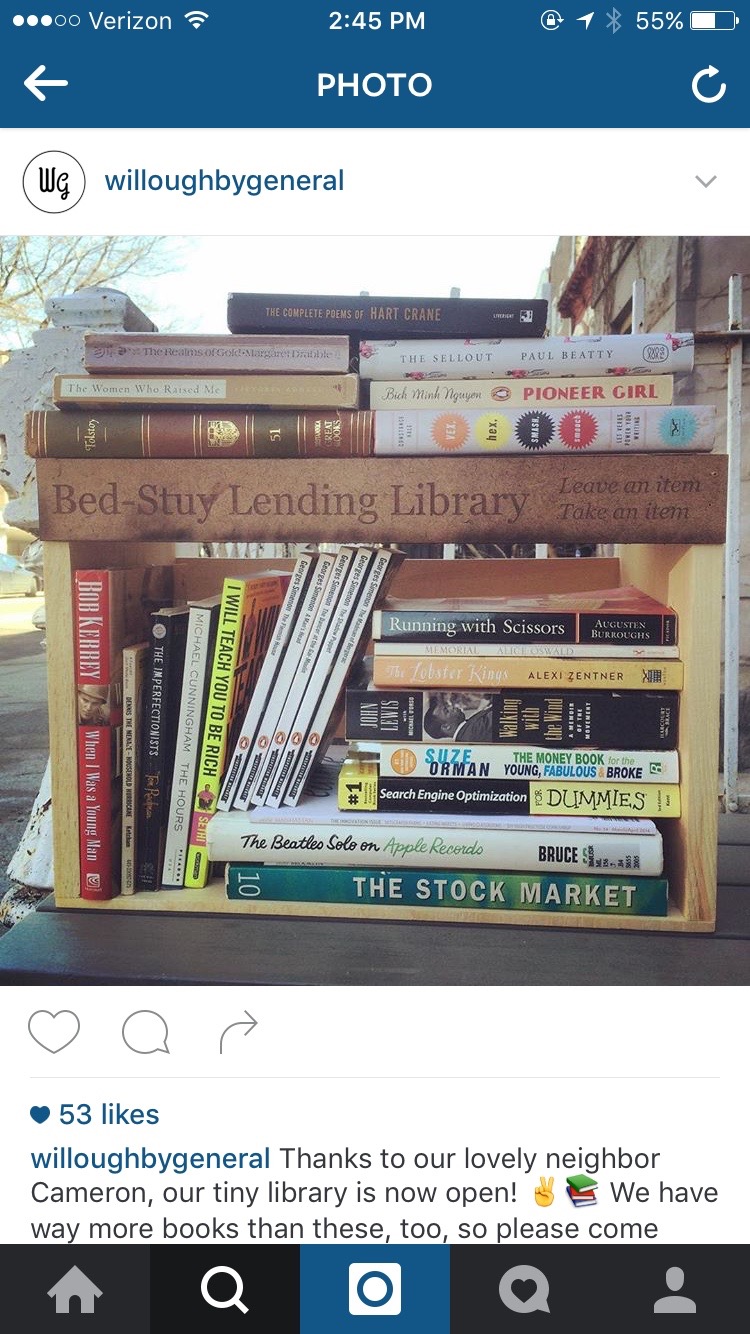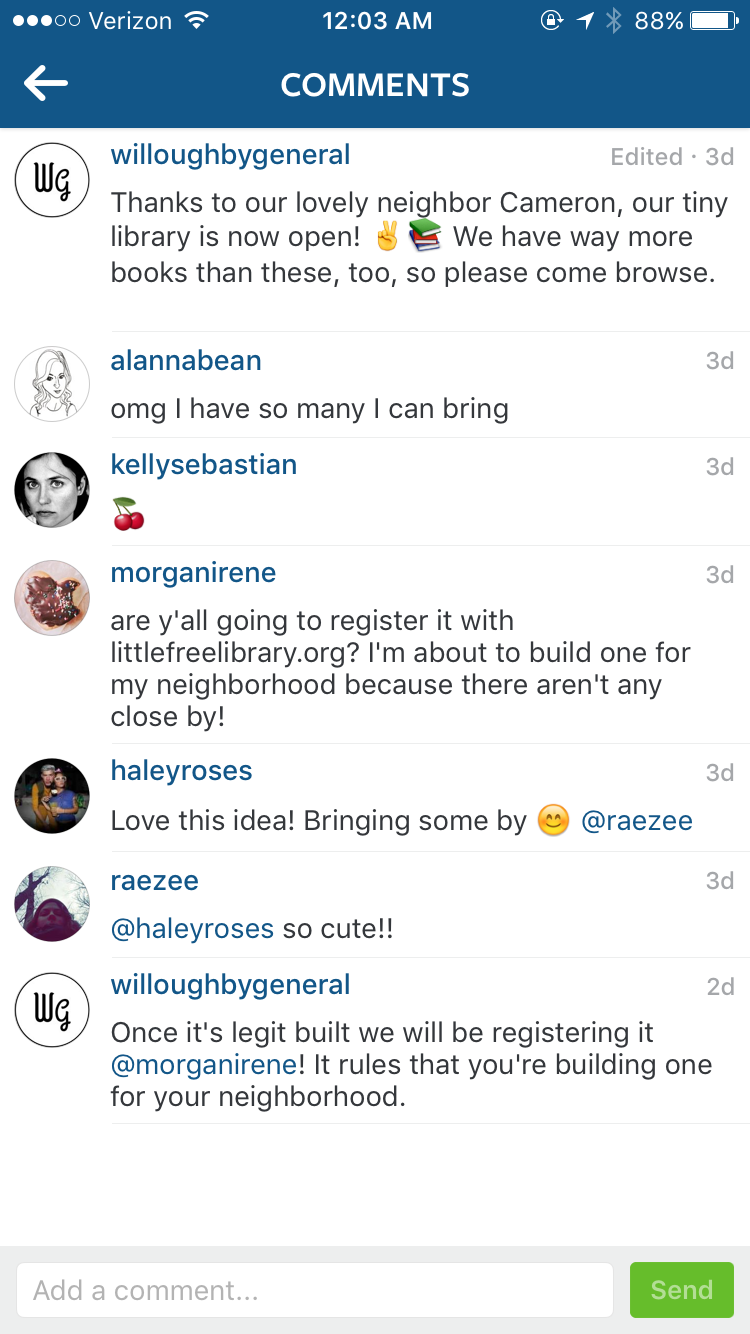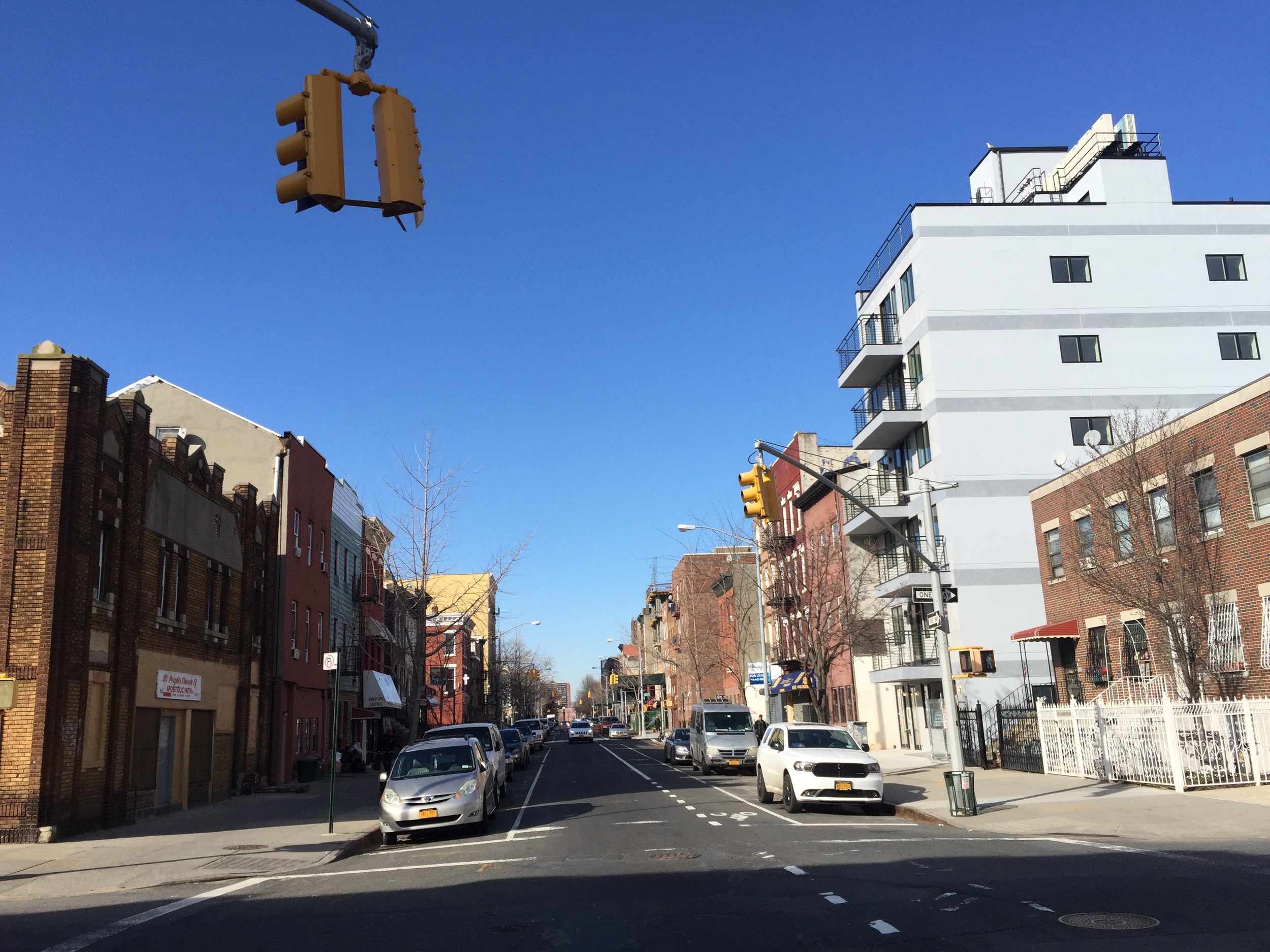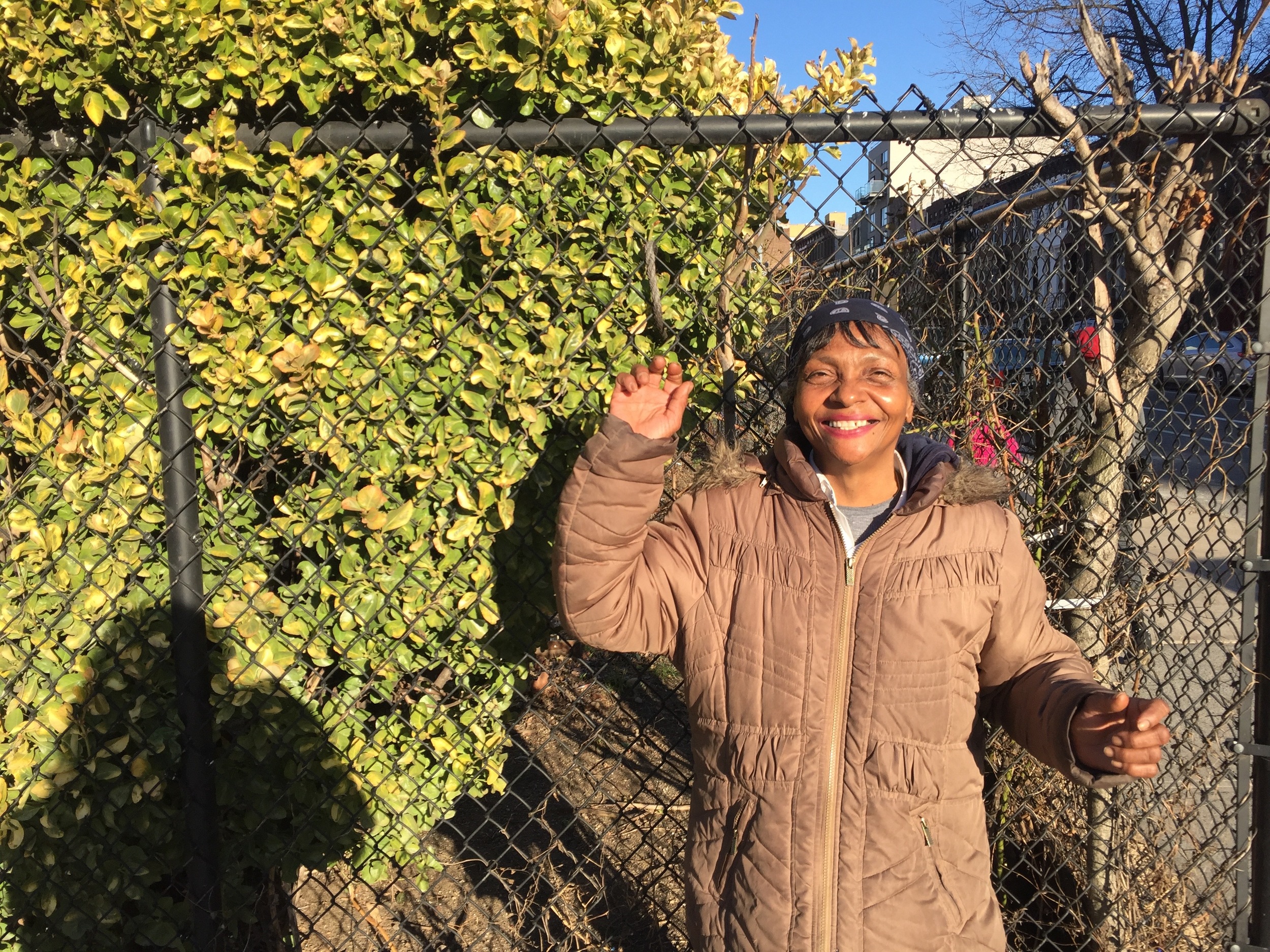March 15 was the big midterm presentation day for us in TransDesign. We had forty minutes to present and receive feedback from the guest critics. It was good to have a deadline and be forced to dig through your thoughts and notes to succinctly summarize our project. Below are the key critiques and my corresponding responses.
How does my tiny library stand apart from the Little Free Libraries already in existence?
My project proposes a network of four libraries in a hyper-localized area to create a sense of place, identity and shared responsibility. There are only four registered LFLs in Brooklyn right now, and the novelty of bringing it to Bed-Stuy has value. Leveraging a known and successful model is on purpose. Furthermore, installation in an urban environment makes it a more unique experience, from figuring out legal places to post it and determining how to securely install the boxes in places that are covered in concrete.
What other things could promote sharing?
What makes the lending library successful is that books are a valued but inexpensive commodity. You can read a book once and then pass it on. Though it needs to be covered from rain and wind, a book is a low maintenance object that carries with it an inherent sense of goodness and reverence. Other objects of value and utility could be a tool library, food, clothes, quote exchange, or even distribution of condoms and dog bags. How to store these things effectively seem difficult though.
How might you create a typology or family of things?
Creating a network of libraries is the first step in this direction. Maybe the constructions could also expand to benches or bulletin boards or special events. Linking this creations with a consistent brand or style would be critical.
It works in practice, but does it work in theory?
This tongue in cheek comment has me stumped. I think it points out that while these micro interventions might add surprise and delight to a person's day, how does it actually manifest into increased social capital. How does the minutia scale up to impact over time. Given my semester-long parameters, it's impossible to demonstrate actual impact. I will work on crafting more theory and hypothesis on this issue. Maybe I can focus more on my theories about the role of the shared object and how it can illicit shared responsibility, trust, respect and reciprocity.
How might Robert Putnam acknowledge this project?
Putnam's Bowling Alone thesis is rather pessimistic about the state of social relations in America. His later works are a bit more positive. I think he'd see my efforts as exemplar grassroots community organizing. What I'm not doing is actively involving and gathering people for one-to-one interactions. My strategy of object-based intervention, though intentional, is more passive.
Am I just going after low-hanging fruit? How can I navigate the barriers of entry in relation to risk?
This comment pushed back on one of my initial objectives of designing something with a low barrier of entry. Maybe if I made the entry a bit hardier, the pay-off would actually be more rewarding. I can definitely recognize the value of riskier prompts and interactions, but based on my experiments and observations, I'm honestly intimidated and wary about objects or events that take a lot of energy or interaction for participation. I'll think further about how I can push deeper with my offerings, particularly with how I can scale books up for bigger risks. How can my design affect groups at levels such as family, firm and market (an idea from a professor).
How can I leverage more of the third place?
I chose to install the library in the in-between space of public/private. The library itself is outside and accessible by the public, but is inherently sponsored by the third place it sits in front of. I agree that I should take the next step to involving more closely the third place. Already, Willoughby General has proposed adding something to the library to offer free condoms and doggie bags. That kind of appropriation and re-purposing is exactly the life that these libraries should take on. Adding on events would be another way to capture the passive interactions with the books and repurpose them into conversation inside the shop.
How might laundromats and bodegas respond to a tiny library?
I've considered placement outside of other frequented third places in the neighborhood. My main reason for focusing on cafes and gardens is that part of their offering is a place to gather and socialize. Yes, laundromats and bodegas are also inherently places of socializing, but they serve more utilitarian purposes. Cafes and gardens attract people with a bit more time to pause and connect with others. Frankly, maybe these less "bougie" places would actually be better for the libraries. But I don't want to flood the neighborhood with boxes. There has to be some scarcity to maintain intrigue.
How can I expand this project from industrial design to more about services and systems?
I think my presentation focused too heavily on the physical design and construction of the library. My fear about this project is that people will look at it and be like, okay, so you built some wooden boxes and installed them in your neighborhood. No! The boxes are one manifestation of a system of shared trust and reciprocity. I need to double down on theory and really amplify the systems and services that I'm proposing.
How can building the libraries be part of the design?
Oh how I'd love to make the building more of a collaborative effort. Figuring out the measuring and cutting alone in the wood shop was a real challenge! When I built my first library in Los Angeles, I did so with a community group and the energy was totally different than what I felt with my thesis prototype. There's no convincing me of the value of the community-effort. I just need to strategize how to make it happen. The biggest barriers will be publicizing and convincing, and then having the tools on site that are necessary to get the job done. For the two remaining cafes, maybe I can make the painting a collective effort. For the garden, there might be a better chance to create a whole event for the construction. Better get on that!
How can the library be a platform for something bigger?
I can see the library being a platform for meeting new people. Maybe it could foster a pen pal or leave a note system. The libraries could connect people to events happening in the sponsoring third places. Could also become a space – physical or representative – of sharing other utilities such as tools, stories, time.
How is this project uniquely Bed-Stuy?
Hmm. Super valid question. Maybe my branding can be Bed-Stuy specific? Or there can be a historical component that tells the story of the neighborhood past? Or can offer services and information that are just for the immediate neighborhood?
What qualities of this library made it successful and how can they be replicated?
- Accessible 24/7
- Exchange is understandable and easy
- Concept is self-explanatory
- Low cost
- Low barrier of entry
- Books are culturually relevent and inherently good
- Aesthetically pleasing
- Minimal legal hassles
What is it about books?
Books have this wonderful quality of mental cultivation and intrigue. For the library, books can be read once and then shared, without any decrease in value. The simple act of loaning and borrowing is a micro-action of trust.
What else could we use once but retains its full value?
We could pass notes. Share tools. Have a time bank.



















































































































